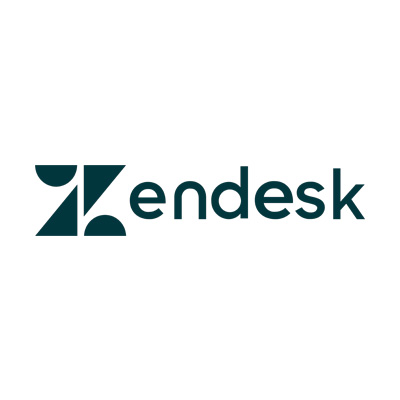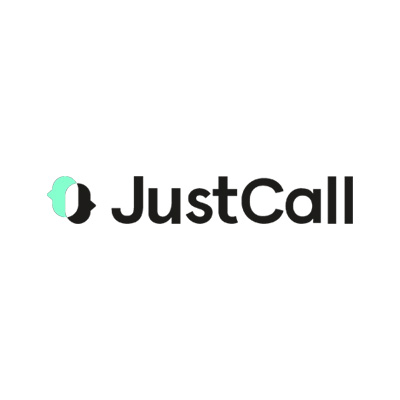From the demanding work of sorting, cleansing, deduplicating and maintaining CRM databases to the crucial selection and adoption of technology for data activation.
Invest 90% of your resources in process improvement and staff training, and only 10% in technology, to make your sales teams unstoppable.
We sort, clean, integrate and enrich the data so that you can use it in your CRM. Also for use in sales.
Integration of data, e-commerce, ERP and other sources relevant to business, sales and marketing activities.
We collect top events and targets from your digital marketing tools and campaigns. We send these signals to the sales and marketing team.
We unify data from data lakes in CRMs, CDP customer management platforms such as Segment or Google Cloud (depending on the customer).
We create audiences for Marketing and ideal customer profiles for sales so that they can be activated in the CRM and campaigns.
We integrate data blended to torture data so you can analyze and activate your data. We apply machine learning and AI modules for forecasting. Many possibilities.
We are specialized in Pipedrive although we can do it with your CRM or other tools that have APIs.
We integrate different applications to make your sales and marketing team unstoppable. We have an important and powerful catalog.
Technology does not solve the problem. We implement a process for change.
NOTION is the link between information and people.
The value is in the implementation of the process and the adoption of the new way of selling based on data.
We stay to help you.
Data exploration is comparable to the preoperative process in medicine, as it is the raw material for automation and personalization.
Some of the key tasks include import or migration, de-duplication, standardization, cleansing, transformation, reconciliation (data matching), aggregation and enrichment, as well as bulk update to the CRM.
In addition, ongoing management and maintenance are essential for daily use. We are experts in the management of sales databases for their use, maintenance and exploitation in CRM and other productivity tools. We also work with Google Cloud to merge data and apply other layers of value where CRMs don’t reach.
We do it faster and with more resources (we have technology, processes and templates that few customers know about). With quality data, more sales are achieved in less time.
Obsession with data quality, not technology.
With quality data, more sales are achieved in less time.
Without proper data standardization, rules, filters, customizations and automations cannot be applied. Data is the raw material in sales and must be reasonably well structured. It is necessary to have an internal process to ensure its maintenance.
The brown is shared between the commercial management, Marketing and splashes the technology department.
We recommend it when there is no in-house expertise or resources. We will do it much faster with technology that we use on a regular basis.
Any company that wants to move to the next level of commercial productivity, use modern CRMs, automation tools in the processes of prospecting, personalization and contact nurturing.
According to a Salesforce study, 44% of customers surveyed claim to lose revenue due to poor data quality.
When you want to address digitization and modernization projects of the commercial process. We call it the preoperative. Without quality data, it is difficult to take the next steps.
Companies that want to implement a data quality culture as the DNA of their sales and marketing strategy.
In most cases we work on the integration of duplicated and non-aggregated data residing in different data silos (ERPs, CRMs, Marketing tools) that need to be cleaned, unified and enriched in order not to lose historical data. This service is accompanied by an automatic integration process to optimize resources and avoid errors. And a manual and process of good practices to ensure the quality and use of the data in the different teams. It should be a before and after in the organization.
Depending on the customer’s profile, size, data location (clouds or on premise) and complexity of their data, the service may vary. The more complex, the more we like it.
A sales data audit (CRM) consists of 15 points. The data can vary in own or third party data. From people, organizations, products, technologies, industries.
We also validate cell phones, emails and identify users with hard or soft bounces from email marketing to optimize the reputation and quality of contact lists.
Once done, we ensure that there is a process and technology in place to maintain the quality and segmentation of the data to move on to the next phases.
Prices start at 1,500 € depending on the complexity, the number of databases to be integrated, the state of the data (duplications, inconsistencies) and the processing (cleaning, deduplication to be performed).
The average cost of these projects for sales databases and CRM is between 3,000 and 6,000 euros.
For large volume databases (data Lakes) the price can increase considerably (we have done projects up to 30k €) and require technology and licenses from third parties such as Customer Data Platforms (CDPs) to host the data, specific applications for data processing and automation or cloud services such as Google Cloud or similar (depending on the technology used by the customer).
In 90% of the cases we manage to clean, recover, integrate, standardize and duplicate the corpus of databases in a single file for use in sales (CRM) and marketing (different tools). Also to update proprietary systems such as ERPs.
It is a titanic job in many cases due to the technical and conceptual complexity of identifying which data are important and when and how they will be used in a cross-cutting manner by teams and tools.
We accompany it with process recommendations to maintain the proposed standardizations and data quality. Also in the integration of systems to avoid manual data processing to minimize errors. At this point we propose Notion as a process management and maintenance tool. We have an optimized system to ensure that all the work that has been done has been worth paying for.
Companies that integrate their own data into their CRM are commercially more profitable. There are countless studies to back this up. Companies that use their own data or first party data manage to multiply their revenues by 2.9 times and reduce costs by 1.5 times. They also increase customer lifetime loyalty (Customer Live Value – CLV).
We help you to audit your own data and integrate it inside and outside your CRM (such as in data platforms called CDPs or Cloud systems like Google Cloud). This is the core of our services and our added value, as we can combine, torture and enrich them for different purposes, such as making sales predictions or customers more predisposed to buy based on historical data.
According to a recent Google study, 98% of companies think that collecting and integrating proprietary data is very important, yet only 38% are doing it, but only 1% know how to activate (use) the data.
With the end of cookies and changes in data protection regulation inside and outside Europe, all experts and the digital sector are going in the same direction.
All companies that have relevant data for the sales process (prospecting, retention and loyalty). And that have them without unification, separated in data silos. The most common ones are ERPs or marketing data, product data, etc.
When it is clear what to do with the data. Who is going to use it, how, where and with what tools. There must be a plan and strategy.
1. Inspirational workshop on first party data
In the Workshop we help you understand the possibilities of what data to integrate and how. And how to use it in conjunction with Pipedrive. The format is 4 hours face-to-face and 2 hours virtual. We recommend that sales, marketing and IT management attend.
2. Collection and transformation of data
We perform the tests for the collection, unification and transformation of the data. In this phase there may be enrichment and other processes before having them available in Pipedrive. This is the most technical part and a POC (proof of concept) is performed prior to project implementation to assess feasibility.
3. Execution and implementation
Once the Poc has been validated and completed, the data is imported into Pipedrive for use by the sales network. Data visualizations are also included either within Pipedrive or in external platforms (power BI, Looker Studio, client intranet).
The data sources that we integrate the most are CRMs, ERPs, ticketing systems, marketing data from Google Analytics 4 and any tool that has an API (marketing automations, email marketing…).
The main targets are CRM for sales activation, GA4 for creating audiences with offline data, campaign platforms such as Google, LinkedIn or Meta.
We also use CDPs such as Segment or ad hoc projects in Google Cloud.
The data we integrate the most are sales data (subscriptions), users, organizations, campaigns.
The Marketing platform we use the most to enrich and extract data is Google Analytics, Google Ads, Google Search Console. In addition to the most used ones such as Mailchimp (any that has API.
Consultancies start at 2-hour sessions at a cost of 500 €.
The average micro-SME client invests an average of €3,000 in a consultancy before embarking on a project.
The average price of a consultancy and/or more advanced proofs of concept (POCs) with proprietary data and integrations ranges from 6,000 to 15,000 €.
We recommend doing a pilot before undertaking the project.
Defining audiences and the ideal customer profile (ICP) is essential. It allows you to focus resources on companies that really need your services, optimizing your budget. The use of first party data enriches the quality of audiences, providing accurate and relevant information to sales and marketing teams.
Although you can import different types of data in Google Analytics 4, the difference in collecting data from different sources is that you can generate audiences based on rich data from different sources. And then send them to CRM, GA4 or platforms such as LinkedIn, Google, or Meta.
We work with Google Cloud and Segment.
Audience building based on first party data is key for B2B companies looking to optimize their marketing and sales strategies by leveraging proprietary data to segment and personalize their campaigns. This includes everyone who wants to improve their return on investment (ROI) on campaigns, reduce the sales cycle, and focus on more qualified prospects through a deeper understanding of the through a deeper understanding of their needs and behaviors.
The commercial director and the marketing director play crucial roles in the implementation and success of the first party data and audience creation service in B2B companies.
Both roles work closely together to align marketing and sales strategies, ensuring a cohesive, results-oriented approach that maximizes the use of first party data and audience building.
Implementing a first party data creation and audience creation service is relevant in the following circumstances:
1. Significant amount of own data: When the company already has a significant amount of high-quality proprietary data that can be analyzed for valuable insights.
2. Personalization of messages and offers: When seeking to personalize messages and offers to meet the specific needs of different customer segments, improving the effectiveness of marketing and sales campaigns.
Market segmentation: When it is necessary to divide the market into well-defined segments, each with a specific strategy, thus increasing the relevance and impact of the campaigns.
4. Improved ROI:** When the company wants to improve its return on investment (ROI) by focusing efforts on leads with higher conversion potential and reducing attention to unqualified leads.
5. Cross-team alignment: When better alignment and collaboration is required between sales and marketing teams, ensuring that both work with unified information and objectives, improving operational efficiency and conversion rates.
6. Investment in analytical and activation tools: When the company is willing to invest in analytical tools and capabilities to constantly monitor, adjust and improve its data-driven strategies.
In summary, it is appropriate to implement this service when a company seeks to be more efficient and effective in its marketing and sales efforts, using proprietary data to make more informed and accurate decisions.
The first party data creation and audience creation service generally includes the following components:
Data Collection:
– Implementation of systems and technologies to collect data directly from customer interactions with the company (websites, mobile apps, CRM, etc.).
– Use of Google Analytics 4 (GA4): GA4 enables more accurate and detailed tracking of user interactions across multiple devices and platforms, providing a holistic view of customer behavior.
– Ensuring compliance with privacy and data protection regulations (such as GDPR, CCPA).
2. Data Cleaning and Standardization:
– Processes to ensure that the data collected is accurate, consistent and in a usable format.
– Removal of duplicates and incorrect or irrelevant data.
3. Data Analysis:
– Use of analytical tools, including GA4, to examine data and extract valuable insights about customer behaviors, preferences and profiles.
– Identification of patterns and trends.
4. Audience Segmentation:
– Creation of specific segments based on insights obtained from data analysis.
– Use of Customer Data Platforms (CDPs) to consolidate and unify customer data from various sources, promoting a more accurate and detailed segmentation.
– Grouping customers into audiences according to criteria such as purchase behavior, demographics, interests, etc.
5. Strategy Personalization:
– Development of personalized marketing and sales campaigns for each audience segment.
– Adaptation of messages and offers to make them more relevant to each group.
6. Optimization of Communication Channels:
– Selection of the most effective communication channels (email, social media, digital advertising, etc.) to reach each audience segment.
– Continuous evaluation and adjustment of channel strategies to maximize impact.
7. Technology and Tools Integration:
– Implementation of technology platforms, including CDPs, to centrally manage and analyze data.
– Integration of analytical and artificial intelligence tools to improve predictive and personalization capabilities.
8. Trial and Error and Continuous Improvement:
– Tracking system to monitor the performance of campaigns and strategies.
– Continuous adjustments based on results analysis to optimize performance.
9. Training and Education:
– Training programs for the marketing and sales team on how to use data and tools to maximize their effectiveness.
– Training on best practices and new technologies, including the use of GA4 and CDPs.
Consulting and Support:
– Ongoing consulting to help the company better understand its data and how to use it to achieve its business objectives.
– Technical and strategic support to address challenges and adapt strategies according to market needs.
Google Analytics 4 (GA4) and Customer Data Platforms (CDPs) such as Segment, are central to this process. GA4 provides detailed analytics and user tracking across multiple devices, while CDPs consolidate data from various sources to provide a unified, in-depth view of the customer, enabling more accurate segmentation and personalization. In addition, GA4 enables data upload, facilitating the integration and use of external data for even more comprehensive analysis.
This comprehensive service helps companies consolidate their data, better understand their customers, and execute more effective and personalized campaigns, resulting in better customer relationships and a higher return on investment.
The most important costs are upfront consulting and data integration. There may be licensing costs and software integrations with a very customized service layer depending on your technology stack.
Having the data accessible and well segmented and the infrastructure to move the data (from one place to another) the cost is the capacity you have in knowing how to filter the information based on business rules. It is more an intellectual work of knowing who your ideal customer is and how to aggregate them. These projects are defined in the initial consulting. If you have already done your homework, the costs start at 3,000 €. An average project in SMEs is €6,000 and up to €15,000 in larger companies.
1. Improved Customer Compression
Accurate Segmentation
3. Advanced Customization
4. Campaign Optimization
5. Efficiency of Marketing Channels
6. Better Decision Making
7. Cost Reduction
8. Increased Sales and Conversions
9. Ongoing Monitoring and Adjustments
10. Regulatory Compliance
11. Sales Department Boost
– Generation of Quality Leads:** Accurate data allows you to identify and capture prospects with greater potential.
– Improved Sales Closing:** Relevant information facilitates more effective sales strategies.
– Sales Process Optimization:** Detailed insights help refine and increase the efficiency of each stage of the sales process.
– Marketing and Sales Alignment:** Improved communication and collaboration between marketing and sales teams, ensuring a consistent and effective customer experience.
Rapid Growth
2. Dispersed Data
3. Inefficient Segmentation
4. Increasing Competition
5. ROI Optimization
6. Sales Growth
7. Data Driven Decisions
8. Regulatory Compliance
9. Sales Process Improvement
10. Team Alignment
Collection and Management of non-relevant data:
– Failure to establish clear processes for data collection, storage and cleaning, which may result in inaccurate or incomplete data.
Lack of Accurate Segmentation:
– Failure to invest sufficient resources in definition. Failure to apply correct segmentation criteria, leading to the creation of audiences that are too broad or irrelevant to specific marketing and sales objectives.
3. Insufficient Integration between Marketing and Sales:
– Failure to align efforts between marketing and sales teams, which can result in a lack of coordination and efficiency in implementing data-driven strategies. Most common.
Business productivity applications are tools designed to connect with your CRM and automate key prospecting and sales closing processes. These applications span several categories, with the most commonly integrated being the following:
1. Prospecting on LinkedIn
2. Call Centers and Virtual PBX Systems
3. Message Automation and Nurturing Campaigns (Playbooks)
4. Information Management Automation
5. Database Maintenance
6. Sales Signals in the Form of Events and Objectives in Digital Assets
7. Creation of Offers, Contents, Delivery Notes and Invoices from within the CRM
8. Integration of Support Tickets and Customer Incident Data*
9. Data Visualization
We are recognized partners of leading business productivity tools and we use and integrate them with our CRM Pipedrive.
See more on our integrations page.
Companies that integrate their business productivity apps are significantly more effective.
Companies that integrate productivity apps with their CRM prospect more, in less time and close more opportunities.
The brown is shared between sales management, marketing and splashes the specific technology department. We recommend it when there is no in-house expertise or resources. We will do it much faster with technology that we use on a regular basis.
Any company that wants to move to the next level of commercial productivity, use modern CRMs, automation tools in the processes of prospecting, personalization and contact nurturing.
When you want to address digitization and modernization projects of the commercial process. We call it the pre-op. Without data quality, no next steps.
Companies that want to implement a data quality culture as the DNA of their sales and marketing strategy.
When doing it internally is
In most cases we work on the integration of duplicated and non-aggregated data residing in different data silos (ERPs, CRMs, Marketing tools) that need to be cleaned, unified and enriched in order not to lose historical data. This service is accompanied by an automatic integration process to optimize resources and avoid errors. And a manual and process of good practices to ensure the quality and use of the data in the different teams. It should be a before and after in the organization.
Depending on the customer’s profile, size, distribution (Clouds or on premise) and complexity of their data, the service may vary. The more complex, the more we like it.
A sales data audit (CRM) consists of 15 points. The data can vary in own or third party data. From people, organizations, products, technologies, industries.
We also validate cell phones, emails and identify users with hard or soft bounces from email marketing to optimize the reputation and quality of contact lists.
Once done, we ensure that there is a process and technology in place to maintain the quality and segmentation of the data to move on to the next phases.
Prices start at 1,500 € depending on the complexity, the number of databases to be integrated, the state of the data (duplicates, inconsistencies) and the treatment (cleaning, deduplication to be performed).
The average cost of these projects for sales databases and CRM is between 3,000 and 6,000 euros.
For large database volumes (data Lakes) the price can increase considerably (we have done projects up to 30k€) and require technology and licenses from third parties such as Customer Data Platforms (CDPs) to host the data, specific data processing and automation applications or cloud services such as Google Cloud or similar (depending on the technology used by the client).
In 90% of the cases we manage to clean, recover, integrate, standardize and deduplicate the corpus of databases in a single file for use in sales (CRM) and marketing (different tools). Also to update our own systems such as ERPs.
It is a titanic job in many cases due to the technical and conceptual complexity of identifying which data are important and when and how they will be used in a cross-cutting manner by teams and tools.
We accompany it with process recommendations to maintain the proposed standardizations and data quality. Also in the integration of systems to avoid manual processing of data to minimize errors. At this point we propose Notion as a process management and maintenance tool. We have an optimized system to ensure that all the work that has been done has been worth paying for.
Managing projects with Notion is an end-to-end solution that centralizes data, facilitates collaboration, automates processes and improves traceability. By adopting Notion to manage your projects and data, you not only optimize operational efficiency, but also boost your team’s productivity and transparency.
Notion enables better alignment between marketing and sales teams. By centralizing information and facilitating collaboration, both teams can work in sync, sharing valuable data and strategies that improve campaigns and conversions. This alignment ensures that marketing initiatives are directly linked to sales objectives, resulting in a more cohesive and effective approach. We use Notion.
Notion’s flexibility and customization is a powerful and unknown tool for marketing and sales teams looking to integrate and centralize their sales processes and documentation, optimizing time management.
Notion is an all-in-one tool, a Swiss Army Knife, perfect for sales and marketing teams, centralizing campaign, lead and customer information. It facilitates real-time collaboration and automates key processes, optimizing productivity and strategic alignment. Its versatility and integration capabilities improve efficiency, enabling a more cohesive and effective approach to lead generation and conversions.
Notion is essential for sales and marketing teams because it centralizes information, facilitates real-time collaboration and automates processes. This improves efficiency, aligning marketing strategies with sales objectives to generate leads and conversions more effectively.
Sales and marketing managers, along with the marketing department, use Notion to centralize key campaign and customer information, improve real-time collaboration and automate critical processes. This tool enables them to align marketing strategies with sales objectives, optimizing efficiency and improving decision making to generate leads and conversions more effectively.
Implementing Notion to integrate marketing and sales makes sense when you are looking to centralize information from both areas in one place, automate data synchronization between teams, improve collaboration and real-time communication, manage campaigns and projects in a unified way, and generate reports that align marketing and sales strategies. This facilitates efficient coordination and maximizes commercial impact.
Marketing Campaign Management:
Content Management:
Training and Documentation:
Performance Analysis:
Analysis and Planning
System Design
Integration Configuration
Testing and Adjustments
Training
Implementation and Deployment in a pilot
Evaluation and adoption to be extended to the rest of the team
Depending on the size of the equipment and current processes.
Projects start at 6,000 €.
Implementing Notion in the management and integration of marketing and sales significantly improves time management with the following results:
Implementing Notion to integrate marketing and sales does not make sense when:
The three most common mistakes when implementing Notion to integrate marketing and sales are:
In our business productivity services, it is crucial to facilitate the adoption of change, especially when it comes to managing numerous processes, tools and data.
In most cases it is complicated and overwhelming. We focus on ensuring that marketing and sales teams manage this complexity gradually to be effective, optimizing the use of time with focus on the process. And above all, knowing how to use data to sell with more information.
This is the key part where most companies fail. They invest 90% of resources in implementation and only 10% in people.
Adding more tools and processes to the business team without dedicating enough time to learn them can cause confusion and chronic rejection, leading to lack of use. This results in projects that don’t work and cost too much because they don’t use them.
It is essential for business managers to ensure that their teams are well trained and have the necessary tools. When teams receive the right training and resources, they become more efficient and motivated. This also reduces the chances of them rejecting new tools and processes.
It makes sense to invest in support when you have already done a commercial productivity and sales and marketing integration project.
It is key for the team to really understand and use new strategies and tools well. It also reinforces the collaboration between sales and marketing, facilitating the adoption of new practices. This ensures that all the effort and money invested in the project really shows in the results. In short, coaching ensures that everything works as it should and that you get the maximum benefit.
1. Customized training based on the profile of the teams: Especially for the profile of users who are lagging behind.
2. Continuous support: Be available to resolve doubts and provide guidance, especially at the beginning of the project until habits change.
3. Advice: Practical tips on how to be more productive and integrate data well and what to do with it.
4. Implementation follow-up: Regular review of progress and adjustments if necessary.
5. Problem solving: Identification and quick solution of any obstacle that appears.
6. Process optimization: Improve procedures to be more efficient and effective.
We monitor the use, implementation and operation of the productivity applications we implement, as well as data quality audits to keep the databases clean and with quality.
Plans start at €9,600 per year.
We have very flexible credit bags. The minimum bag of credits is 500 € and is 20 credits. The credit tranches are of 15 minutes. The hourly cost is 100 € and the support is through tickets.
In 90% of the cases and in the first 3 months of the implementation of the project, the results have a very high valuation, since the very close support on how to apply the tools and how to activate the information on a daily basis is highly appreciated. Especially for prospecting.
It is highly valued in marketing to launch the first automated personalization campaigns.
1. Lack of a clear commercial digitalization project.
2. Culturally unprepared organization.
3. Minimal integration of data silos.
4. Lack of time and training.
5. Insufficient support from general management.
1. Not having a clear commercial digitalization project, so there is no need to invest, since it will not work.
2. Not being culturally prepared for change. And no one cares.
3. Lack of support from general management. And if it is not done, nothing happens. Everything remains the same.
Also known as first party data. This is data that an organization collects directly from its own users, customers or audiences without intermediaries. This data comes directly from users’ interactions and behaviors in real life through sales or support and also from digital assets such as websites, mobile applications, sales.
It’s the gold that companies have. Customer databases and everything they know about them. No one else has this information. Use it to improve the profitability of your business.
CRM and Pipedrive is just the tip of the iceberg. There are many things that can be done and very interesting. We recommend a specific workshop to understand the possibilities.
In Pipedrive, we integrate customer sales data that are not directly visible in the CRM, such as those coming from ERP systems. This integration aims to keep customer information up to date, allowing the sales network to access accurate and timely data.
In addition, we incorporate data from various marketing platforms, including Google Analytics 4, paid campaigns and web visitor activity. We have extended this integration to ticketing systems and product catalogs to ensure that our databases reflect real-time changes.
There are other platforms and applications, known as CDP (Customer Data Platforms), designed specifically for customer data integration.
Our recommendation is to include only that information that brings real value to commercial activities, facilitating effective integration between marketing and sales actions.
The data can be used to have more information (for example which are the most profitable or loyal customers by sales history). It can also be used for reporting and decision making. But what we like the most is the activation of the data, that is to say that by changing a field of a customer you can activate a campaign. Or from the CRM itself to send a message or campaign on Linkedin.
Selling is being in the right place at the right time. And from there to be very agile in decision making.
It depends on the complexity. If we have to connect to services (API) extract the information, transform it and torture it to enrich it and give us added value. That is to say that the value of the data is worthwhile.
We have performed simple integrations from 1,500 € to 30,000 € (with data processing and data cleansing of large volumes of databases).
The average integration project ranges from €3,000 to €6,000.
Lower cost integrations are also possible by integrating Marketplace apps that integrate natively (plug and play) or through Maketo Zapier. Costs go down drastically, but they are not customized.
It is necessary to assess what is best in each case.
It depends on how critical the information you need to manage customers and sales is. Not all companies and teams need it, but all studies go in the same direction. Companies that don’t have their databases in shambles, with duplicate contacts, are much slower and slower to take any promotional action.
Databases are a company’s most precious gold.
We recommend that you get well informed and value it.
It is about getting data out of Pipedrive to other environments to be able to make reports and data visualizations. Also to integrate the data into other applications, for example to enrich online audiences in Google Analytics 4 or other platforms to be able to activate the information through campaigns.
We import the data into Pipedrive for reporting purposes or to provide more and better information in the sales process.
There are different ways to do this such as manual processes through the Pipedrive interface, the API or Webhooks among other systems.
Some integrations we like

Launch automations from Pipedrive with just one button
We use it.

The super power of a CDP and MK Automation
We use it.

Web visits + contact app
We use it.

Integration with Linkedin and Sales Navigator
We use it.

Customer support. Very powerful and easy to use
We use it...

Integration with Linkedin and Sales Navigator
We also use it to flow

Database maintenance.
We use it.

Advanced Calling System pro
We use it.

Powerful Marketing Automation tightly integrated into Pipedrive

Report display system
We have integrated from the Clorian ticketing system (ticket sales) all the customer history since 2016. we have enriched the demographic data from the zip code and we have calculated the value of each customer based on their type of purchases. And now every day we have sales data integrated into Pipedrive. We can make more powerful audiences since we have the historical data and with the power of Pipedrive we can activate ,the data through email marketing , Meta or Google campaigns. We have saved 90% time in data management and reporting.
The ERP data was not synchronized with the CRM. They were two different data sources and we always had to export and import from mailchimp. Now we have it integrated.
In imanta we have integrated the historical data of our customers with Google Tag Manager and Google Analytics 4.
Every time you send us an email and the customer opens the link, we send to GA4 the customer segmentation that we have in the CRM via API. Data such as sector, subsector, if it is a customer, services offered, technology used. With this information from the CRM we can make more precise audiences for nurturing campaigns...
Our sales network cannot access the CRM because it is an indirect and external sales network. We use Cognito forms for opportunity management. We have integrated the forms with Pipedrive so that they can report in Pipedrive the activity and commercial evolution of the sales opportunities and our team edits them in Pipedrive. The information is mirrored thanks to a synchronization so that both teams can work together and have updated data. The integration has been done through Webhooks of the two tools. We have achieved that without having no access license they can work as a team.